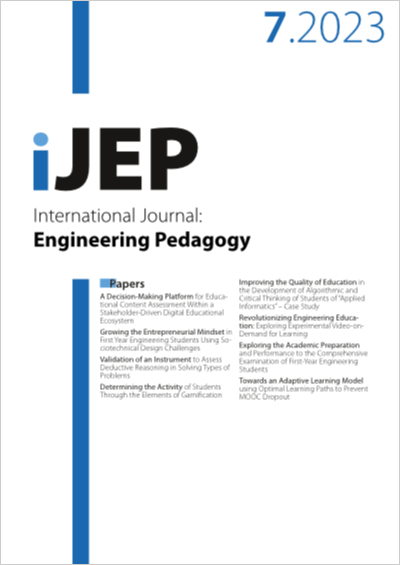Revolutionizing Engineering Education: Exploring Experimental Video-on-Demand for Learning
DOI:
https://doi.org/10.3991/ijep.v13i7.41683Keywords:
T-periodic, engineering education, active learning, Engineering programAbstract
Attention to the interaction between instructors and students in engineering education is of remarkable importance. Incorporating practical work alongside theoretical teachings can enhance the effectiveness of learning. In this article, the use of short video-on-demand is introduced as a method of teaching students. An experimental video sample is used, and the interaction between the instructor and students in the classroom while using this video is discussed. As a case study, we investigate the concept of periodic waveforms in a stable system and multiperiodic waveforms in an unstable system, resulting from a change in a control parameter. Although the work is demonstrated on a specific scientific topic, the suggested method can be applied to other scientific subjects. In order to enhance the effectiveness of education, tasks outside the classroom are assigned in addition to in-class activities. The proposed method has been implemented during several academic semesters at the undergraduate and graduate levels, specifically in the fields of mechanical engineering and renewable energy engineering. The results obtained from surveys and evaluations indicate a strong connection with students, understanding and retention of scientific topics. One of the significant advantages of the proposed method is the visualization of educational content through short videos, which enhances the learning process. Among the findings of this study, improvements in skills such as accuracy and the application of engineering reasoning, in addition to scientific knowledge, can be highlighted.
Downloads
Published
How to Cite
Issue
Section
License
Copyright (c) 2023 Mohammad Afkar, Parham Karimi, Roghayeh Gavagsaz-Ghoachani, Matheepot Phattanasak, Panarit Sethakul

This work is licensed under a Creative Commons Attribution 4.0 International License.



